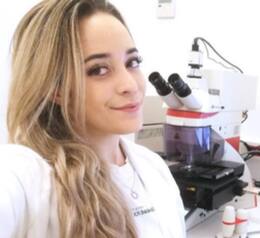Scholars 6th Edition International
Neuroscience and Brain Disorders Forum
THEME: "Frontiers in Neuroscience and Brain Disorders Research"
 17-18 Mar 2025
17-18 Mar 2025  Amsterdam, Netherlands
Amsterdam, Netherlands THEME: "Frontiers in Neuroscience and Brain Disorders Research"
 17-18 Mar 2025
17-18 Mar 2025  Amsterdam, Netherlands
Amsterdam, Netherlands 
University of Castilla-La Mancha
Unraveling hippocampal subfield-specific proteomic changes during Alzheimer’s disease progression
Hondius, D. C., van Nierop, P., Li, K. W., Hoozemans, J. J., van der Schors, R. C., van Haastert, E. S.,
van der Vies, S. M., Rozemuller, A. J., & Smit, A. B. (2016). Profiling the human hippocampal
proteome at all pathologic stages of Alzheimer's disease. Alzheimer's & dementia : the journal of the
Alzheimer's Association, 12(6), 654–668. https://doi.org/10.1016/j.jalz.2015.11.002
Braak, H., Alafuzoff, I., Arzberger, T., Kretzschmar, H., & Del Tredici, K. (2006). Staging of Alzheimer
disease-associated neurofibrillary pathology using paraffin sections and immunocytochemistry. Acta
Neuropathologica, 112(4), 389-404. https://doi.org/10.1007/s00401-006-0127-z
Gonzalez-Rodriguez, M., Villar-Conde, S., Astillero-Lopez, V., Villanueva-Anguita, P., Ubeda-Banon,
I., Flores-Cuadrado, A., Martinez-Marcos, A., & Saiz-Sanchez, D. (2021). Neurodegeneration and
Astrogliosis in the Human CA1 Hippocampal Subfield Are Related to hsp90ab1 and bag3 in
Alzheimer’s Disease. International Journal of Molecular Sciences, 23(1), 165.
https://doi.org/10.3390/ijms23010165
Alzheimer’s disease (AD) is the most widespread neurodegenerative disorder, with a higher incidence
in women. Neuropathological signs of the disease include early pathological deposits of tau and
amyloid-? protein, astrogliosis and neurodegeneration in the entorhino-hippocampal axis. Previous
stereological and proteomic data comparing control cases with advanced AD cases (Braak stages V-VI)
have demonstrated specific involvement of hippocampal subregions (cornua ammonis – CA1, CA2,
CA3- and dentate gyrus -DG-) in AD, showing that CA1 is the most affected by astrogliosis and
neurodegeneration. Nevertheless, proteomic analyses focused on single hippocampal subfields, paying
special attention to the changes during AD progression, have not been carried out yet. This study aimed
to identify the proteomic differences between the human hippocampal subfields related to the
development and the progression of the Alzheimer’s disease.
Fresh-frozen human hippocampal tissue blocks from female AD cases were divided in three groups:
group 1, Braak stages I-II; group 2, Braak stages III-IV, and Braak stages V-VI. They were cryostatsectioned and collected on specific slides. On one hand, part of the sections was processed to perform
MALDI Imaging assay to analyze the peptidic profiles from the regions of interest (ROIs): CA1, CA2,
CA3 and DG. On the other hand, remaining sections were Nissl stained and the ROIs were
microdissected and collected in separate tubes. Tissue extracts from microdissection were used to
perform LC-MS/MS analysis to identify specific hippocampal region protein subsets. Our analysis
revealed distinct proteomic profiles in the hippocampal subfields analyzed across AD stages. The
proteomic analysis allowed us to identify differentially expressed proteins (DEPs) in each region during
the progression of the pathology, which were characterized using the bibliography to find out the ones
that could have a role as potential biomarkers.
The description of the hippocampal subfields proteome and the identification of differentially expressed
proteins in each hippocampal region during the progression of the pathology represent significant steps
towards Alzheimer’s disease understanding.